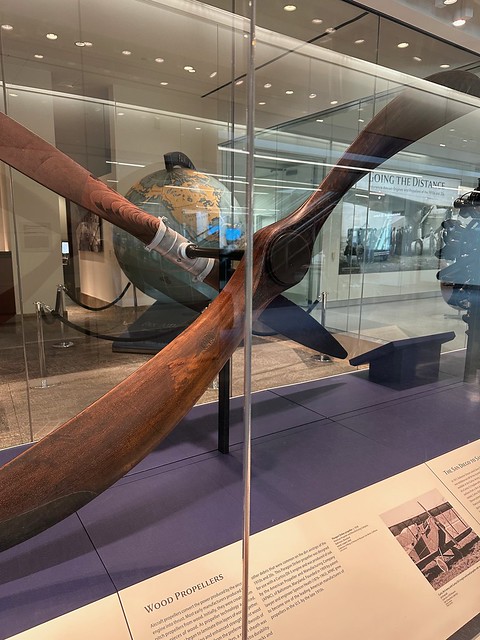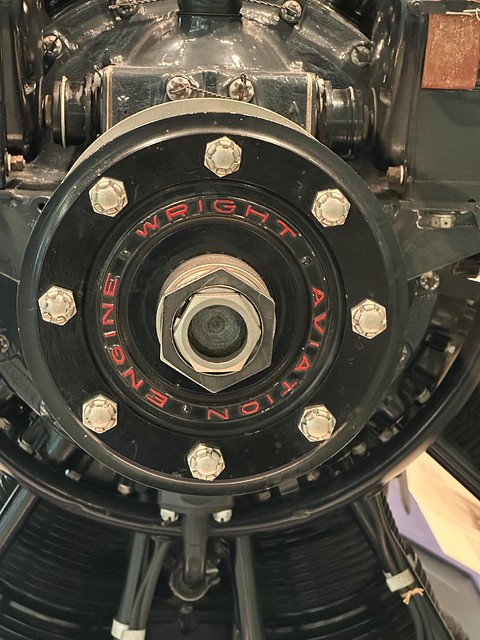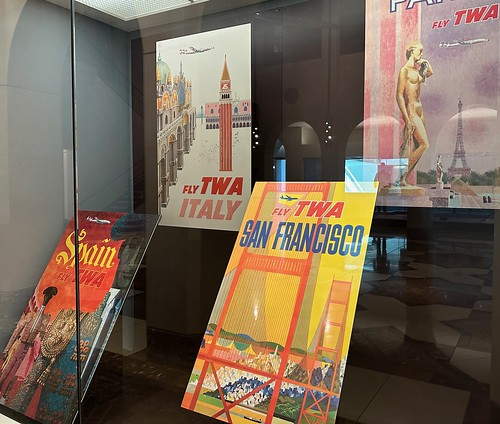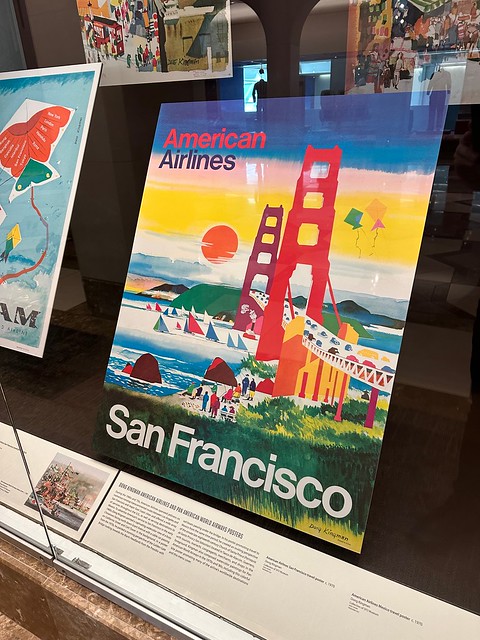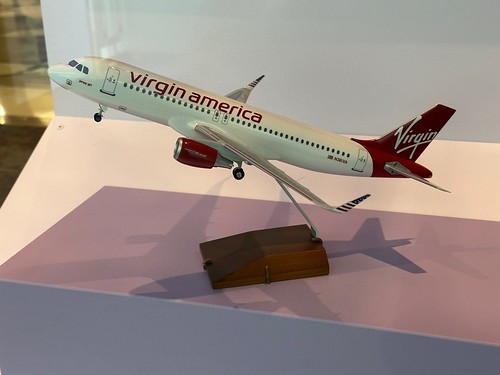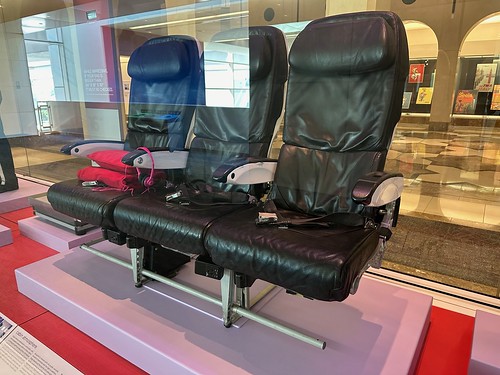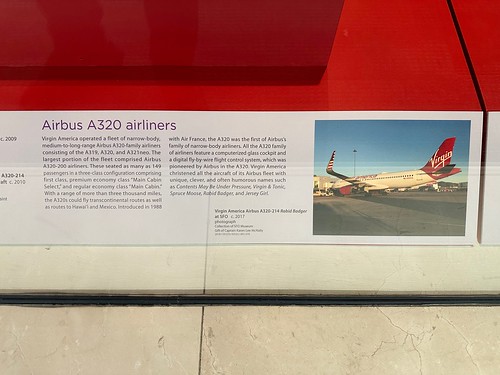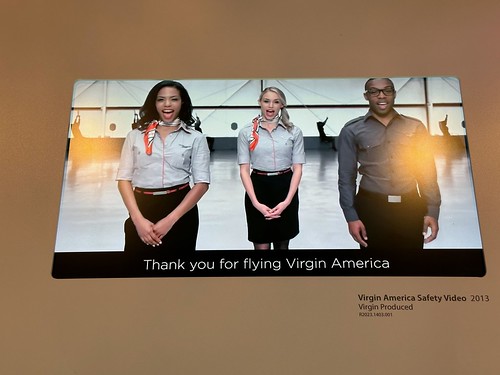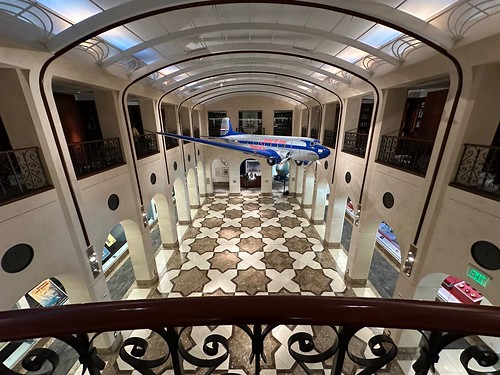
Tucked away in the corner of SFO’s International Terminal ticketing area between the food court and the Terminal A entrance sits the SFO Museum and Library. It’s built to look like a scale model of the SFO entrance hall from the past. Few seem to even know about this museum, yet they have small exhibits throughout the airport you’ve probably looked over while waiting for your flight.
The upper level of the museum is mostly a research library with books locked away behind glass; you need special permission to access them. Everything else is completely free to wander around and browse.
I should point out that despite the small size of the museum, their collection is enormous and rotates frequently. So what was on display during my visit may have been swapped out for another exhibit if you visit the museum in the not-so distant future.
Two of the oldest artifacts on display are a propeller made of wood and an airplane engine from the Wright Brothers’ eponymous company. It’s hard to imagine either of these being airworthy but then again I did fly around in a wicker basket that one time…
Not sure if this is commonly known but one of the business types involved with the Wright Brothers was a certain Glenn L. Martin, and yes that’s the same Mr. Martin who Lockheed-Martin is named after.
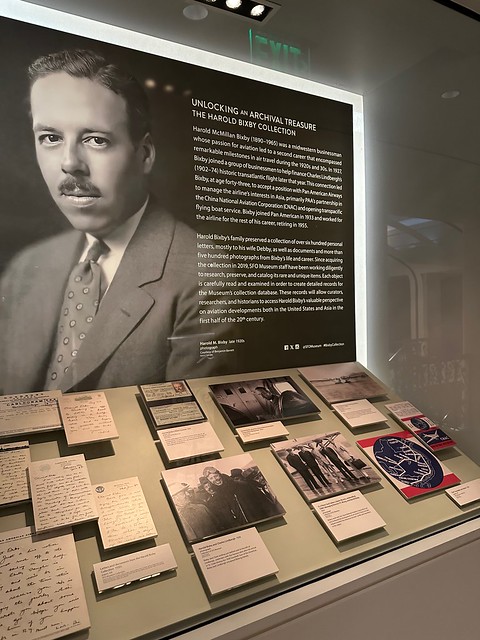
I found myself surprisingly intrigued by an exhibit on Pan Am executive Harold Bixby, who established their expansion into Asia back in the 1930’s. Through his personal letters and photos you get a sense of what travel was like back then — especially air travel. Ever wonder which came first, the airport or the airplane?
The answer, of course, is boats. Boats with wings on them, or “flying boats” could take off and land on any reasonably large and still body of water (such as the San Francisco Bay) instead of a paved runway. Sounds pretty wild today but the age of modern air travel didn’t really take off, so to speak, until after World War II.
All of this is a roundabout way of saying that the Bixby Collection ought to make you appreciate how much easier travel has become over the past century.
A small display of historic airline posters touting various destinations displayed in the museum gave off Mad Men vibes. I could see Don Draper presenting these as he puffed away at a cigarette.
Come to think of it, the American Airlines poster for San Francisco on the right almost looks like it could be on the cover of San Francisco Magazine.
For those of us who flew to or from SFO during a certain era the lyrics to Virgin America’s safety music video are seared into our brains. Whether or not you found the song catchy or annoying it’s very memorable — which is what matters for safety instructions.
Fly away with me, yeah.
The current Virgin America exhibit unfortunately misses the point. We all liked Virgin America not so much because of their unique amenities, but because they were the one airline with the audacity to offer amazing customer service instead of treating passengers like cattle. In fairness I don’t know how that could be encapsulated into a museum exhibit. It does show off how stylish the airline was, though without the purple/pink mood lighting.
Wikipedia says the name was originally Virgin USA although the way the logo is blurred out in certain scenes of the video seemingly contradicts this — it looks more like USA Virgin, maybe? I’m not great at reading lips but the only scene in the video that mentions the airline by name where their lips sync up is the “Thank you for flying Virgin America” sequence.
My recommendation: If you have time to spare at SFO and are interested in aviation it’s worth checking out. While it’s free the museum hours are limited. Most of the exhibits are temporary (the Virgin America exhibit ends in November 2024) so unless you’re a very frequent flyer there will probably be a new exhibit each time you’re there. The main level of the museum is on the same level as the BART platforms: if you exit forward through the faregates and go past the international check in counters, turn right and the museum is at the end of the hallway next to the A gates.

